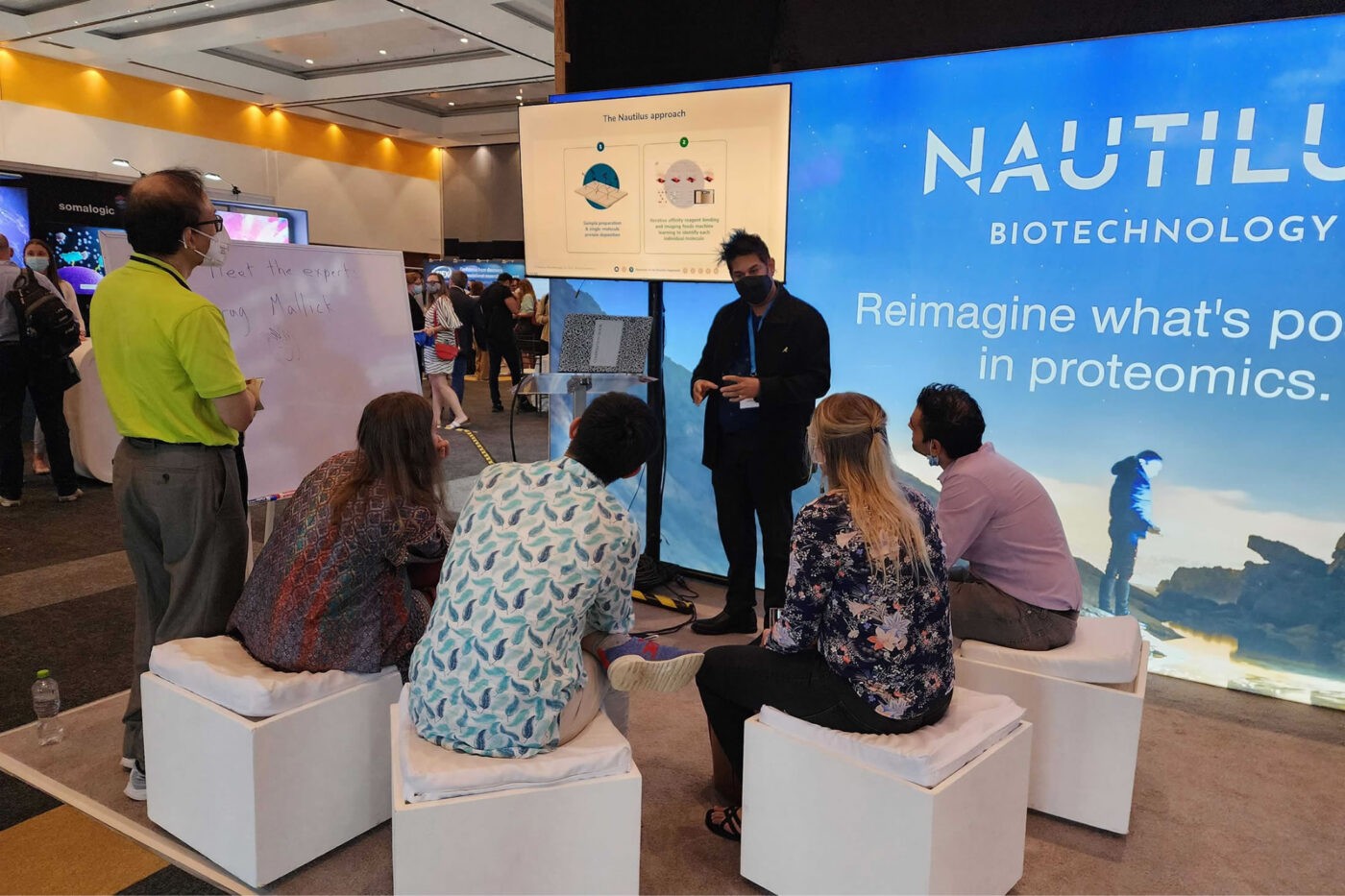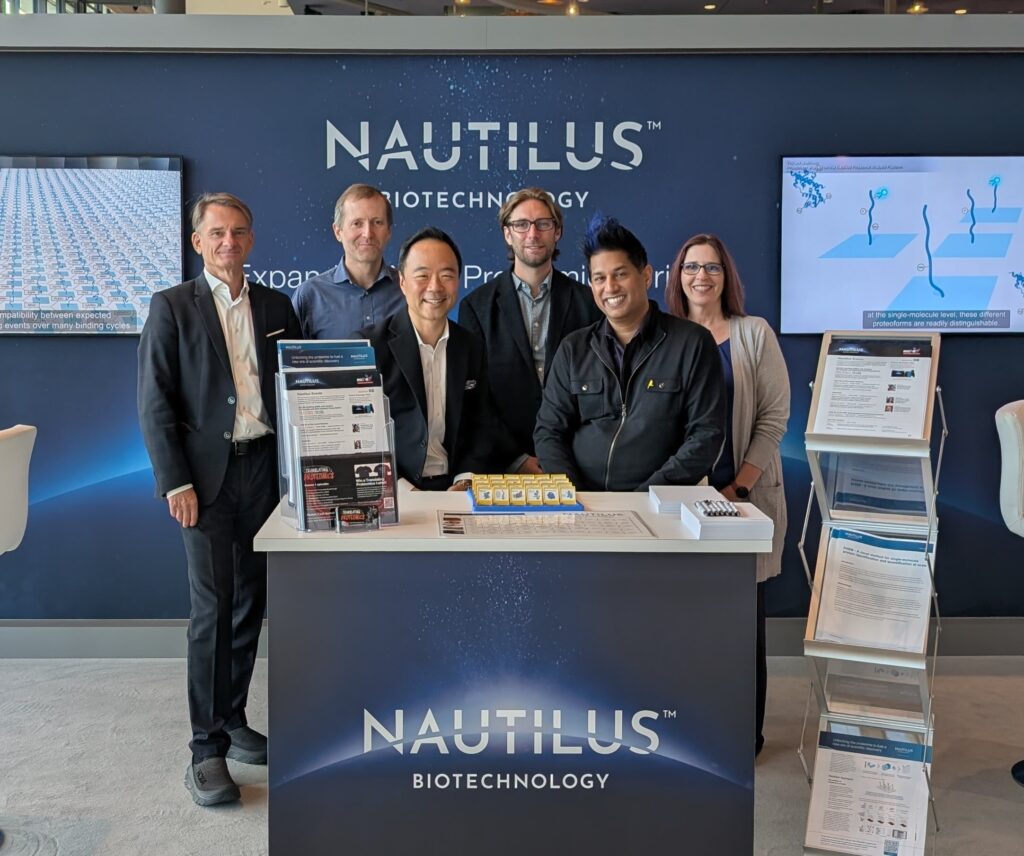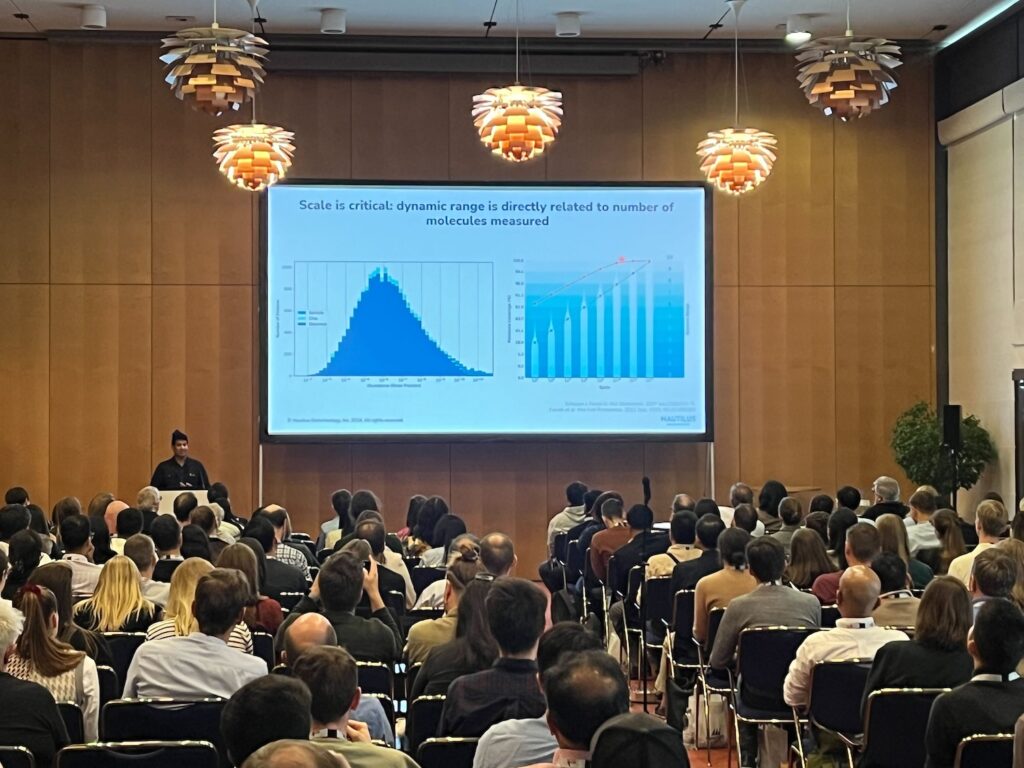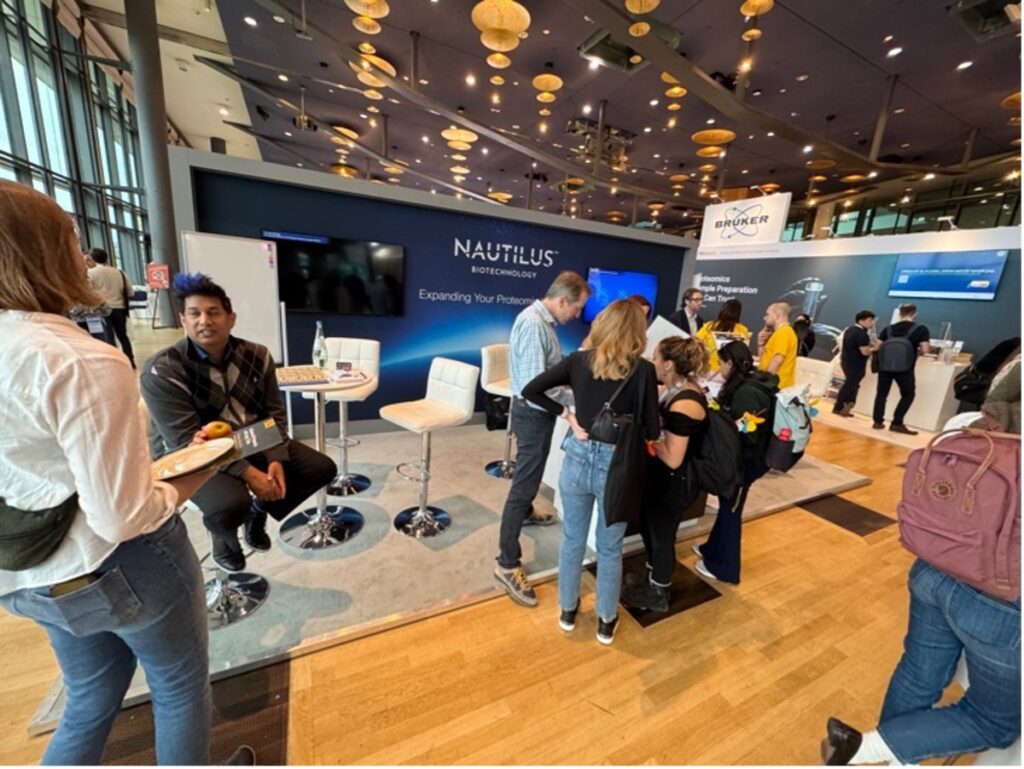
Nautilus at HUPO 2024 – Advancing proteomics across two critical and complementary research dimensions
Nautilus Biotechnology
October 30, 2024

The Nautilus Team just got back from HUPO 2024 in Dresden, Germany where we had the incredible opportunity to engage with hundreds of members of the proteomics community. For Nautilus, HUPO 2024 was particularly exciting because it marked the beginning of a transition from focusing on how our platform works to demonstrating the platform’s ability to ask and answer novel biological questions.
Indeed, the NautilusTM Proteome Analysis Platform is unique in its anticipated ability to advance biology across two critical and complementary research dimensions – broadscale proteomics and targeted proteoform studies – both powered by single-molecule analysis. Broadscale analyses are designed to give researchers unprecedented views of the breadth of the proteome across its wide dynamic range, while targeted proteoform analyses are designed to enable researchers to examine individual proteins with a depth and resolution that’s never been seen. Both are essential to the future of proteomics and its ability to revolutionize basic biology, biomarker discovery, and drug development, and we were incredibly proud to share advances in both dimensions at HUPO 2024.
Lunch seminar – Demonstrating the potential of tau proteoform studies and exceptional consistency in protein decoding

A core focus of our time at HUPO was demonstrating the Nautilus Platform’s potential to deliver never-before-seen data with direct and impactful biological relevance. At our lunch symposium, we showcased this potential through ‘first of their kind’ pilot experiments that begin to examine how tau proteoforms change in Alzheimer’s disease. Efforts towards developing this tau proteoform assay were initiated as part of our partnership with Genentech and represent a general template for what we envision will become a wide class of targeted proteoform analysis assays. Such assays enable the examination of proteins’ functional forms at a resolution and scale never previously possible with existing methods.
Low resolution studies of tau protein PTMs and isoforms have shown it undergoes many alterations as Alzheimer’s progresses, but the relationship between the actual tau molecules that exist in cells, the proteoforms, and disease progression is obscured by the low-resolution of current technologies. We showed that we can detect tau proteoforms in a variety of Alzheimer’s model systems including patient-derived iPSC organoids, miBrain organoids, and mouse models. Across millions of single-molecule measurements, we observed the first signs of biological variation in tau proteoforms potentially associated with Alzheimer’s progression. Such studies, when expanded to larger cohorts and more detailed time-courses may have significant implications for drug and biomarker development.
On the broadscale side, we presented data highlighting continued advances in the development of our multi-affinity probes and process enhancements in our methodology for broadscale protein decoding, Protein Identification by Short-epitope Mapping (PrISM). Our data shows that over many single-molecule probe-protein binding cycles, we have extremely stable binding rates, resulting in consistent, sensitive, and accurate quantification of proteins from simple mixtures. This data demonstrates the general performance and integration of our core platform while highlighting the progress we’ve made in improving quality, stability, reproducibility, and scale – all attributes that will be essential for biologically meaningful analyses.
Engaging with a community that’s ready for next generation proteomics

Through hundreds of interactions with HUPO attendees at our booth, our posters, our presentations, and more we saw that the proteomics community is ready for next-generation platforms. Guided by presentations from Neil Kelleher and many others, attendees were more focused on proteoforms than they had been at any other HUPO conference. They were ready to dive into the details of our single-molecule analysis capabilities and excited to learn how they could potentially use our platform in their research. Some key themes in our discussions included:
- The sensitivity of the platform, and how the unique scale of measurement, in the billions of protein-molecules, enables its projected dynamic range
- The applicability of the platform to diverse biological questions ranging from analysis of cancer development and progression to neurological disorders and questions in plant science and microbial biology
- The rigorous approach we have developed to correct for errors, estimate false discovery rate, and increase confidence in our single-molecule protein identifications
Get ready for the next-generation of proteomics!
We extend our heartfelt thanks to the HUPO organizers for a fantastic conference that left us invigorated by the interest and engagement we received. With ongoing work generating novel data on never-before-seen biology, we are excited to unleash the power of single-molecule proteomics and change how life sciences research is done.
To join in on the excitement, keep an eye out for our upcoming Labroots webinar where we’ll share the latest data coming off the Nautilus Platform and give you an even more in-depth look at the development of our technology. In the coming weeks, you can also check back in on the Nautilus Blog where we’ll be posting select presentations from HUPO 2024. Please subscribe to the Nautilus Blog and Newsletter to keep up-to-date, and as always, you can reach out for more information through our contact page.
For in-depth conversations about important topics in proteomics, check out our Translating Proteomics podcast. Our most recent episode focuses on plasma proteomics and will be of particular interest to HUPO attendees and the broader proteomics community.
MORE ARTICLES
